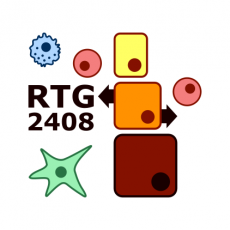Dr. Miriam Bollmann

Dr. Miriam Bollmann
Former Associated PhD Student
Associated Project 7
AP7: The role of Syndecan-4 in the development of Osteoarthritis
|
|
Osteoarthritis (OA) is a widespread disease that plays a particularly important role in the increasingly aging population. According to the WHO, OA is one of the top 10 most disabling diseases in the developed countries. In 2019, total hip or knee arthroplasty implantation was one of the most common full hospitalization surgeries in Germany, accounting for approximately 450,000 cases. Syndecan-4 (Sdc4) is a transmembrane protein and belongs to the heparan sulfate proteoglycan family. Interestingly, Sdc4 expression in different cell types is upregulated by pro-inflammatory cytokines in a NF-κB-dependent manner. Moreover, Sdc4 itself is actively involved in the regulation of IL-1 signaling, as the absence of Sdc4 in fibroblasts results in decreased IL-1 signaling. Loss of Sdc4 or blockage of Sdc4-dependent signaling protects mice from OA and rheumatoid arthritis (RA)-induced joint destruction. Moreover, the extracellular domain of Sdc4 can be proteolytically cleaved off at the cell membrane surface, releasing the still intact ectodomain into the extracellular matrix. We were able to detect the soluble form of Sdc4 in the synovial fluid of knee OA patients. Therefore, this projects aims to investigate whether the shedding process is disease dependently regulated and which cells of the knee joint (e.g. chondrocytes, synoviocytes) contribute to process of Sdc4 shedding. Since good biomarkers for the degradation and regeneration of the cartilage as well as a good read out for the efficacy of novel therapeutics for OA are still missing, this project also examines the potential of shed Sdc4 in synovial fluid as a marker for OA severity. Further, during this project the shedding mechanism during OA progression shall be elucidated. Especially, it is of interest which proteases are responsible for the shedding in OA and how these are regulated in the context of the disease. On a functional level, this project also aims to establish the role of Sdc4 shedding in OA. Since the absence of Sdc4 proved to decrease the efficiency of IL-1 receptor recycling, the influence of induced Sdc4 shedding on IL-1 signaling is another main aspect of this project. Overall this project will help to unravel the function of Sdc4 in OA and thereby lead to a better understanding of the development and progression of this disease. (This project was externally supervised by Prof. Dr. Jessica Bertrand)
Syndecan-4 shedding in osteoarthritis. |
Photos: by UMMD, Melitta Schubert/Sarah Kossmann









